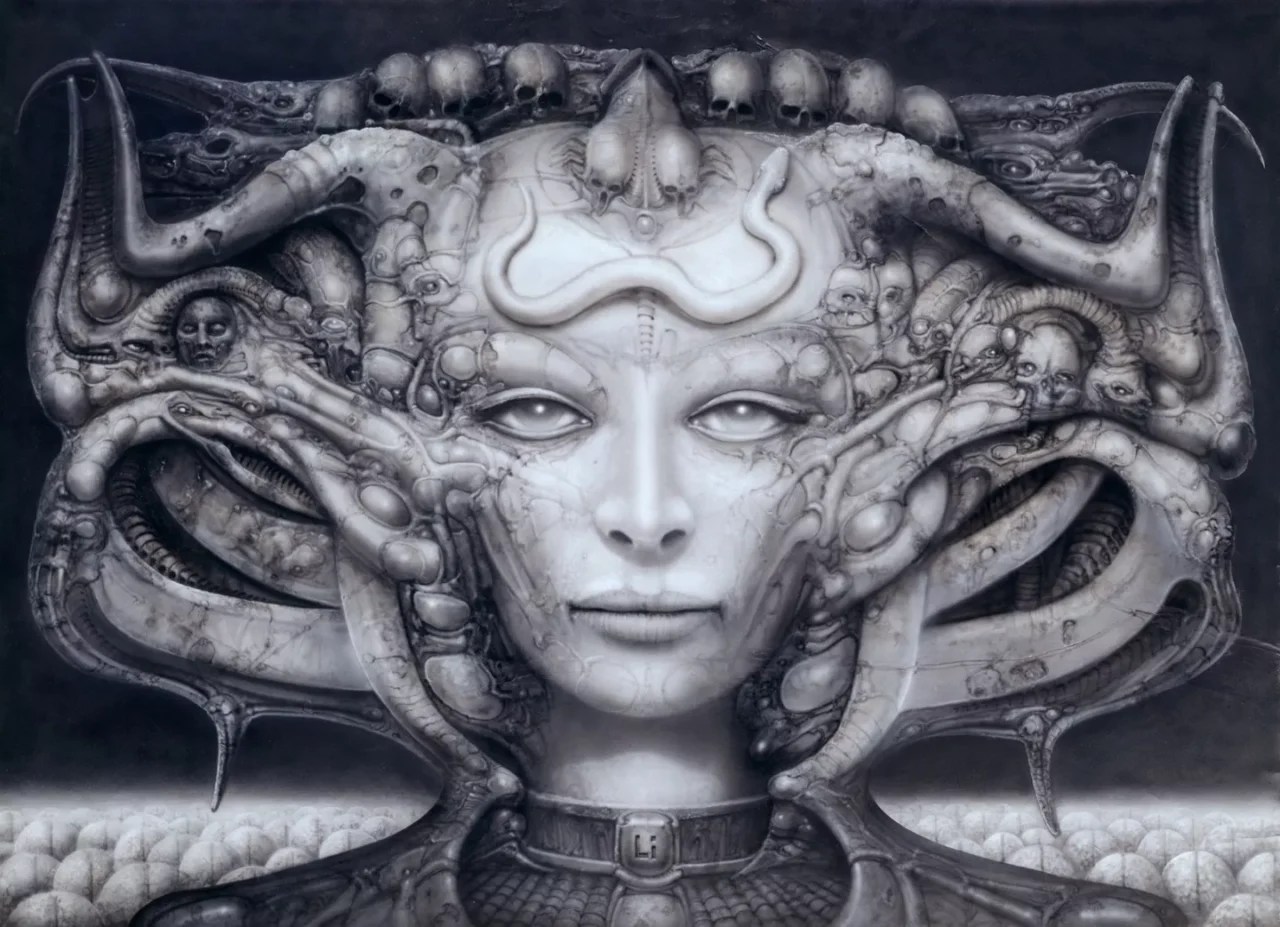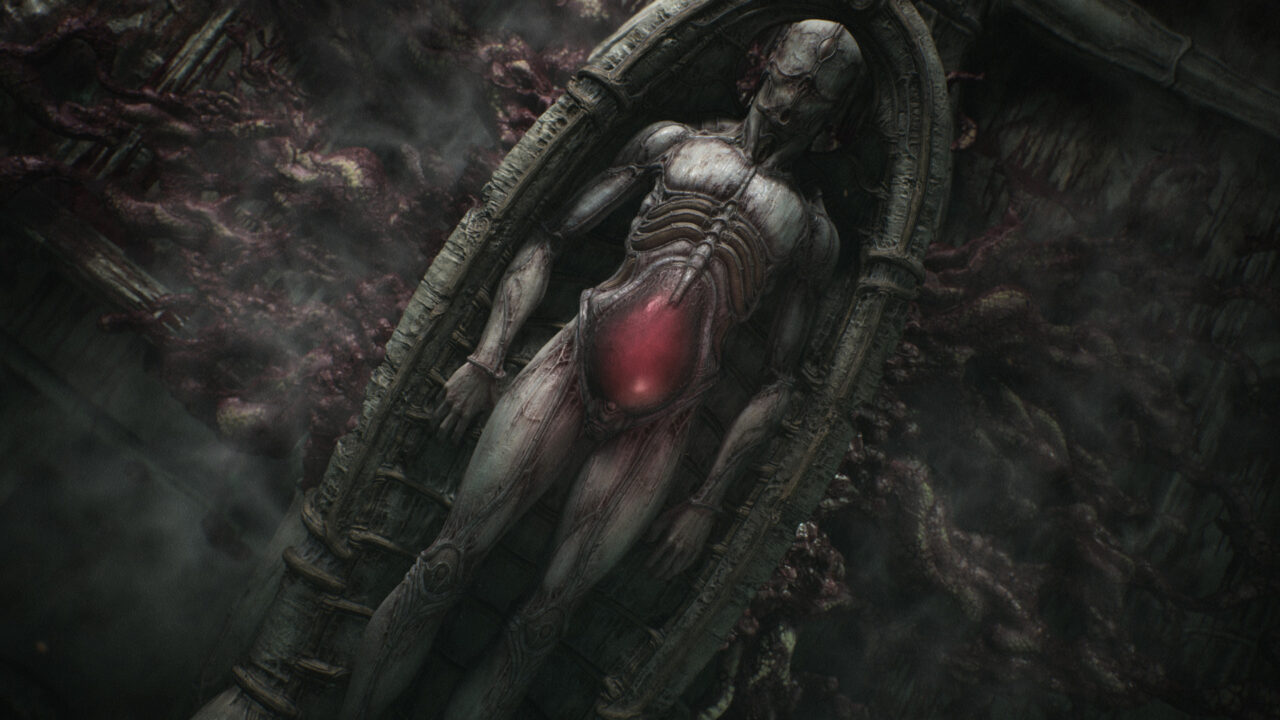The Nightmare Creations of Machines and Aliens

Scorn the horror game by Ebb Software has met positive but mixed reviews but its visual style and presentation are undoubtedly its shining features. At the root of its incredibly visceral art style is the legacy of the late Swiss artist Hans Reudi Giger. Anyone who’s familiar with the name already knows his debut and mass popularization of the biomechanical style with his work on the Ridley Scott film Alien.
Scorn is the most recent prominent title that has channeled Giger’s influence. Some other notable titles are ID Software’s DOOM franchise, Warframe by Digital Extreme, and Soma by Frictional Games. Biomechanical art is uniquely different than prosthetic, bionic, or cybernetic mechanisms. The difference is that Biomechanical objects are formed as figures synonymously organic and synthetic, the other genres are originally organic with synthesized organs and appendages attached, grafted, or integrated into an organic foundation. The key feature is a being that has an anatomy of mechanics and organics intertwined to where it is indistinguishable from either.

The Nightmarish Works of H.R. Giger, the Artist behind “Alien”, H.R. Giger Museum
H.R. Giger’s artwork can be described as an entanglement of pipework around and through figures with everything galvanized with a pale metal sheen. There is a blatant presence of sexual and violent imagery involved. Female figures are depicted in compromising poses and subjugated to the creatures and architecture. His work can even be described as sadistic and cruel in its violence which does make it controversial. That being said Giger’s art was also an act of art therapy as he would have terrible nightmares that would affect his daily life and well-being and he has stated once he started drawing them he would find the discomfort alleviates.

Stylistically Biomechanical art is already a heavily loaded genre but what about narratively? Instead of the fantasy of a world where machines advance humanity, the world of biomechanical making is a step beyond humanity. Sci-fi genres like futurism and cyberpunk are centered around the idea of humanity integrating advanced prosthetic technology into their bodies elevating their individual or collective abilities. Biomechanical concepts are closer to AI persons and automated infrastructure. For organisms or implements to be created by treating flesh and machine as the same there requires an apathy to the treatment of life. There are risks that are disregarded or worked through like invasive species, causing suffering to live or created subjects, and the ethics of what the new creation is capable of and how it will be used. That last point is a central mystery to Scorn, the horror of how life is abused, what purpose it serves, and what type of cruel will created such a despicable facility.

DOOM 2016 and DOOM ETERNAL take place in our solar system in a sci-fi future where the union of industry and the occult have caused hell to invade our world summoning our musclebound space warrior. Human facilities are full of round smooth mechanical structures, much of it to create a habitable interior on the surface of mars but much of it can be seen channeling the many substances involved with containing and refining the energy of hell for humanity’s infrastructure. Inside Hell, the underworld is a designed mess of Gothic and Medieval architecture of impossible forms all designed around the glorification of demonkind and the torture and violation of human souls to extract energy, their violated leftovers are what transform into the feral demons the player fights. The overworld Maykrs are barely better as they too feed off of the soul extract to gift themselves intelligence and reason over the demons. The Maykrs appear angelic with white technological bodies held aloft but their inner nature is no different than the demons as once they are deprived of the energy they revert to feral beasts. When fighting them their armor can be torn apart showing their demonic bodies underneath.

Warframe takes place in our solar system eons into the future where warfare is so technologically advanced it is basically magic. The world does lean heavily into depicting superpowered combat as science-based in the game universe. The playable Warframes the player control are exactly biomechanical. They are distinctly not people in suits but rather suits of mechanical design that implement engineered organics and mechanics. Each Warframe is a unique form of its own and is unique in its function and faculties.
Our current world of medicine deals mainly in the realm of prosthetics and bionics with cybernetics being in the experimental stages. Simply put, machines and organic anatomy fit together as easily as oil and water with the central issue being biology rejecting the presence of foreign matter. For that reason, prosthetics are the most common with limbs that can be worn over residual limbs and even interchanged for specific functions like running, swimming, and even mountain climbing. Integrated mechanics are majority reserved for titanium bone mounts and experimental sensors for nerve or muscle control. So in this sense, synthetic or semi-synthetic organisms are far from today’s technology, sentient and sustainable AIs are yet to be developed and the hardware housing them is not able to rejuvenate itself as living cells do. Regardless there is still the question of what we might envision post-human intelligent life to be and it is certainly entertaining to ponder.
For more articles and news on horror, mystery, and spooks keep reading at Dread XP.
Categorized:Editorials

